The Risks of Using AI
Artificial Intelligence (AI) brings many benefits but also poses many risks if abused or used without control. From data security issues, information distortion, copyright infringement to the risk of labor replacement, AI poses challenges that need to be identified and managed effectively. Understanding the risks of using AI helps individuals and businesses apply the technology safely and sustainably.
Artificial Intelligence (AI) is now woven into everything from smartphone assistants and social media feeds to healthcare and transportation. These technologies bring unprecedented benefits, but they also come with significant risks and challenges.
In this article, let's explore with INVIAI the risks of using AI across all areas and types of AI – from chatbots and algorithms to robots – based on insights from official and international sources.
- 1. Bias and Discrimination in AI Systems
- 2. Misinformation and Deepfake Dangers
- 3. Threats to Privacy and Mass Surveillance
- 4. Safety Failures and Unintended Harm
- 5. Job Displacement and Economic Disruption
- 6. Criminal Misuse, Fraud, and Security Threats
- 7. Militarization and Autonomous Weapons
- 8. Lack of Transparency and Accountability
- 9. Concentration of Power and Inequality
- 10. Environmental Impact of AI
- 11. Existential and Long-Term Risks
- 12. Navigating AI's Future Responsibly
Bias and Discrimination in AI Systems
One major risk of AI is the entrenchment of bias and unfair discrimination. AI models learn from data that may reflect historical prejudices or inequalities; as a result, an AI system can treat people differently based on race, gender, or other characteristics in ways that perpetuate injustice.
Malfunctioning general-purpose AI can cause harm through biased decisions with respect to protected characteristics like race, gender, culture, age, and disability.
— International AI Safety Report
Global bodies like UNESCO caution that without fairness measures, AI risks "reproducing real world biases and discrimination, fueling divisions and threatening fundamental human rights and freedoms". Ensuring AI systems are trained on diverse, representative data and audited for bias is essential to prevent automated discrimination.
Hiring Bias
AI recruitment tools may discriminate against certain demographics
Lending Discrimination
Financial algorithms may unfairly deny loans based on protected characteristics
Policing Inequity
Predictive policing may reinforce existing law enforcement biases
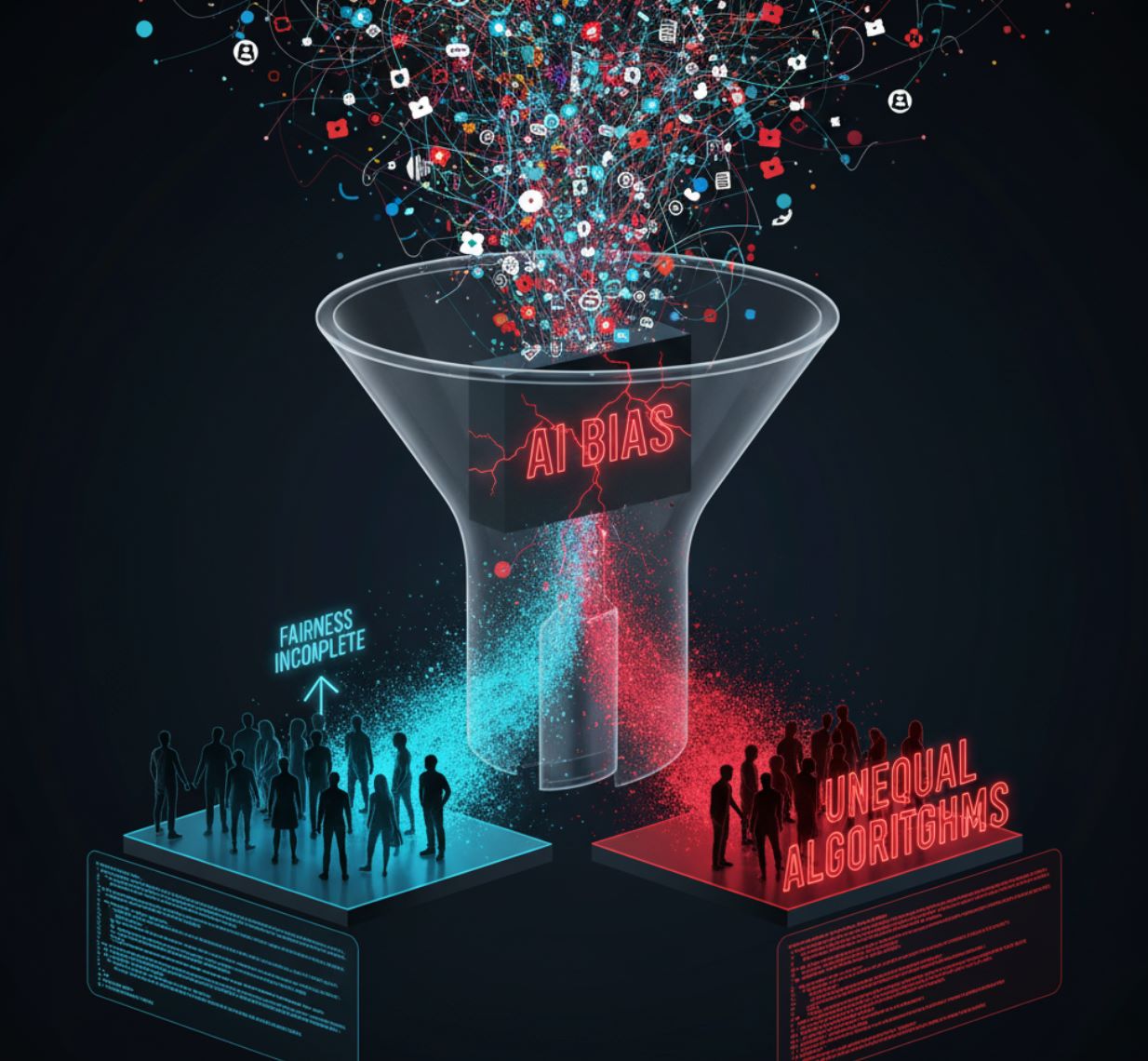
Misinformation and Deepfake Dangers
AI's ability to generate hyper-realistic text, images, and videos has sparked fears of a misinformation deluge. Generative AI can produce convincing fake news articles, bogus images, or deepfake videos that are difficult to distinguish from reality.
In fact, misinformation and disinformation fueled by AI pose one of "the biggest ever challenges to the democratic process" – especially with billions of people due to vote in upcoming elections. Synthetic media like deepfake videos and AI-cloned voices can be weaponized to spread propaganda, impersonate public figures, or commit fraud.
Deepfake Videos
Voice Cloning
Officials warn that malicious actors can leverage AI for large-scale disinformation campaigns, making it easier to flood social networks with fake content and sow chaos. The risk is a cynical information environment where citizens cannot trust what they see or hear, undermining public discourse and democracy.
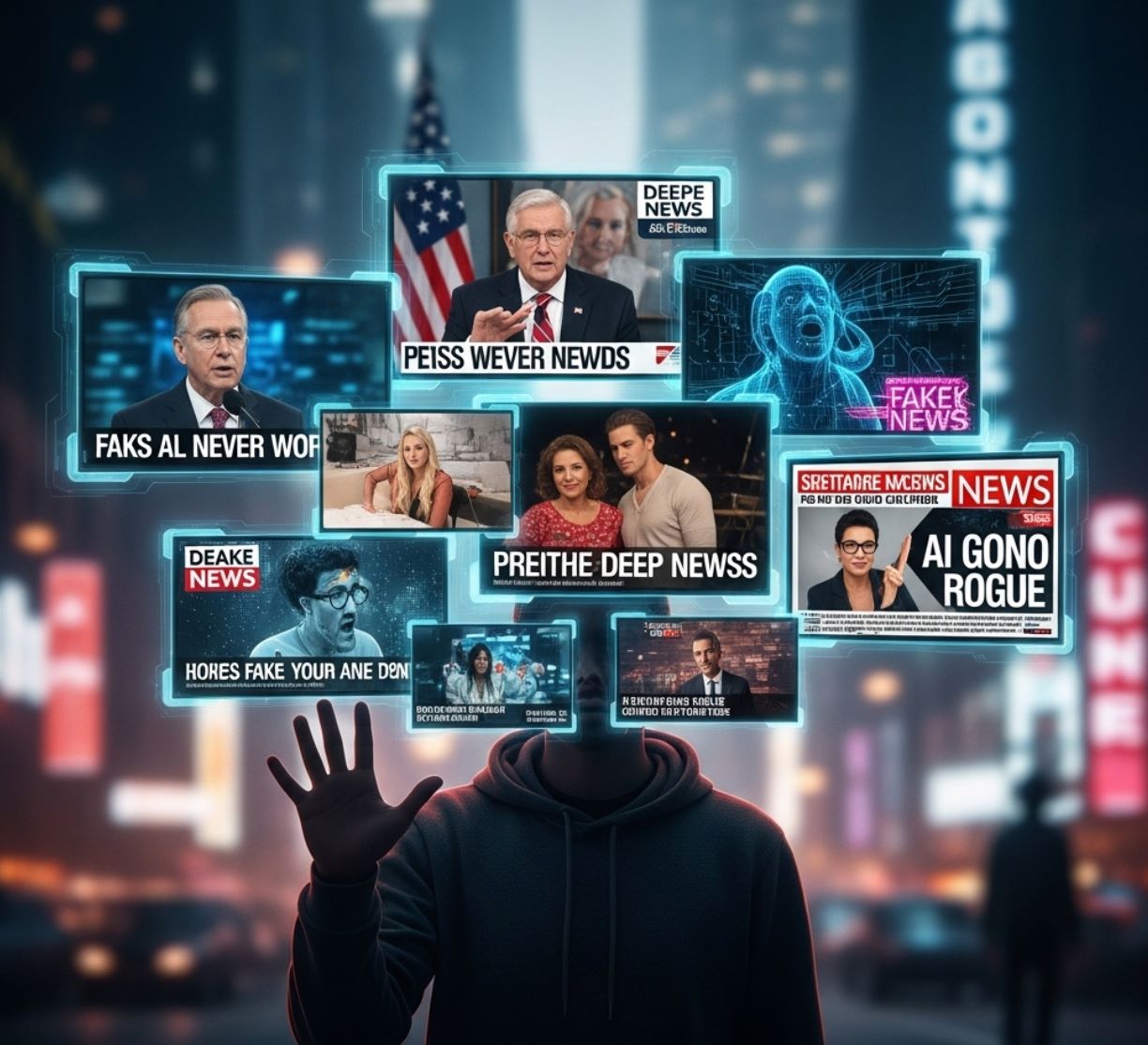
Threats to Privacy and Mass Surveillance
The widespread use of AI raises serious privacy concerns. AI systems often require massive amounts of personal data – from our faces and voices to our shopping habits and location – to function effectively. Without strong safeguards, this data can be misused or exploited.
For instance, facial recognition and predictive algorithms could enable pervasive surveillance, tracking individuals' every movement or rating their behavior without consent.
Facial Recognition
Continuous tracking of individuals in public spaces
- Identity tracking
- Behavioral analysis
Predictive Analytics
AI analysis revealing intimate personal details
- Health status
- Political beliefs
Social Scoring
Rating citizens based on behavior patterns
- Credit scoring
- Social compliance
Privacy is a right essential to the protection of human dignity, autonomy and agency that must be respected throughout an AI system's life cycle.
— Data Protection Agencies
If AI development outpaces privacy regulations, individuals could lose control over their own information. Society must ensure that robust data governance, consent mechanisms, and privacy-preserving techniques are in place so that AI technologies do not turn into tools of unchecked surveillance.
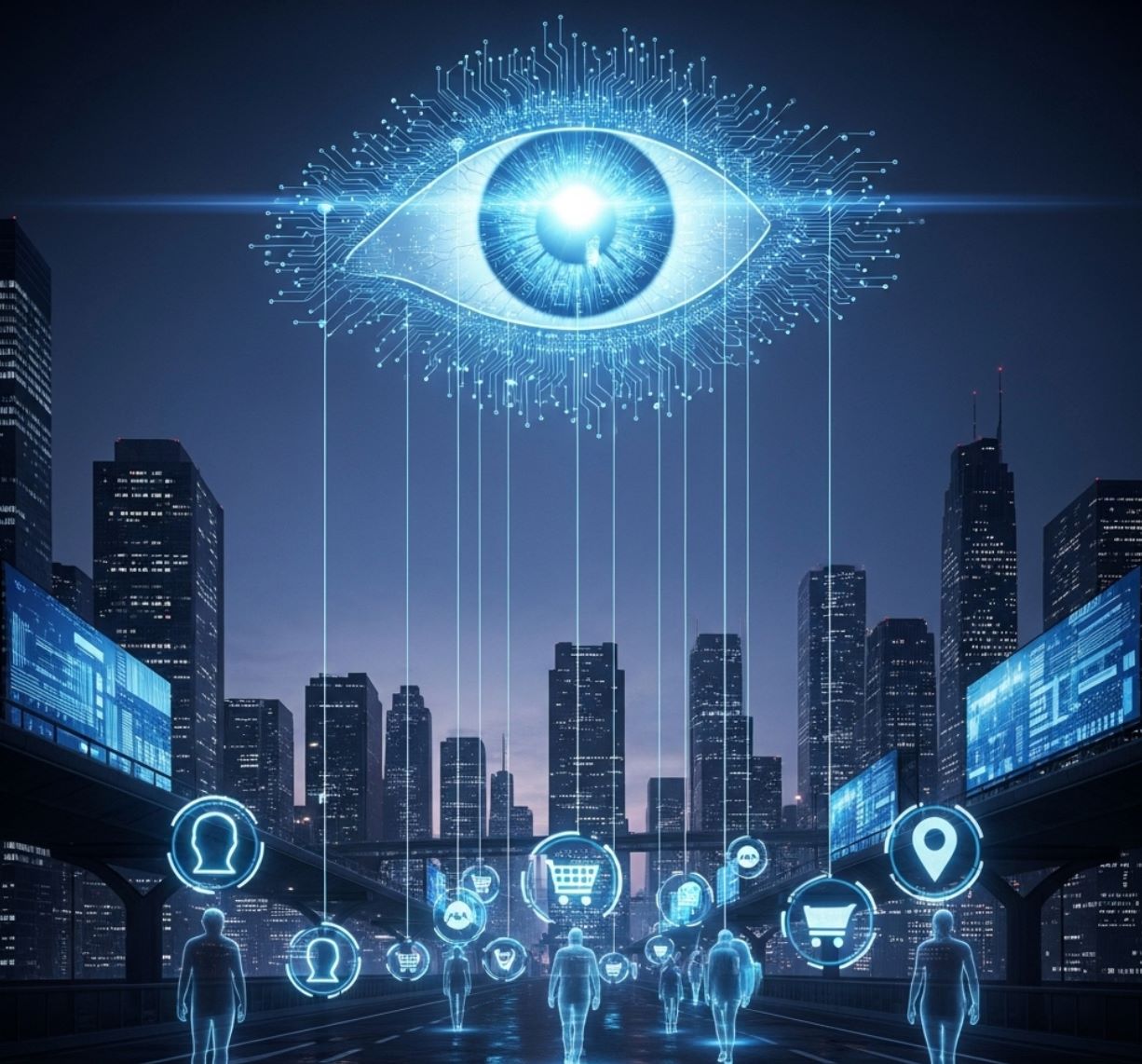
Safety Failures and Unintended Harm
While AI can automate decisions and physical tasks with superhuman efficiency, it can also fail in unpredictable ways, leading to real-world harm. We entrust AI with ever more safety-critical responsibilities – like driving cars, diagnosing patients, or managing power grids – but these systems are not infallible.
Glitches, flawed training data, or unforeseen situations can cause an AI to make dangerous mistakes. A self-driving car's AI might misidentify a pedestrian, or a medical AI could recommend the wrong treatment, with potentially deadly consequences.
Autonomous Vehicles
Medical AI
Power Grid Management
Unwanted harms (safety risks), as well as vulnerabilities to attack (security risks) should be avoided and addressed throughout the life cycle of AI systems to ensure human, environmental and ecosystem safety and security.
— International AI Guidelines
In other words, AI systems must be rigorously tested, monitored, and built with fail-safes to minimize the chance of malfunctions. Over-reliance on AI can also be risky – if humans come to trust automated decisions blindly, they may not intervene in time when something goes wrong.
Ensuring human oversight is therefore crucial. In high-stakes uses (like healthcare or transportation), final decisions should remain subject to human judgment. Maintaining safety and reliability in AI is a continuous challenge, demanding careful design and a culture of responsibility from AI developers.
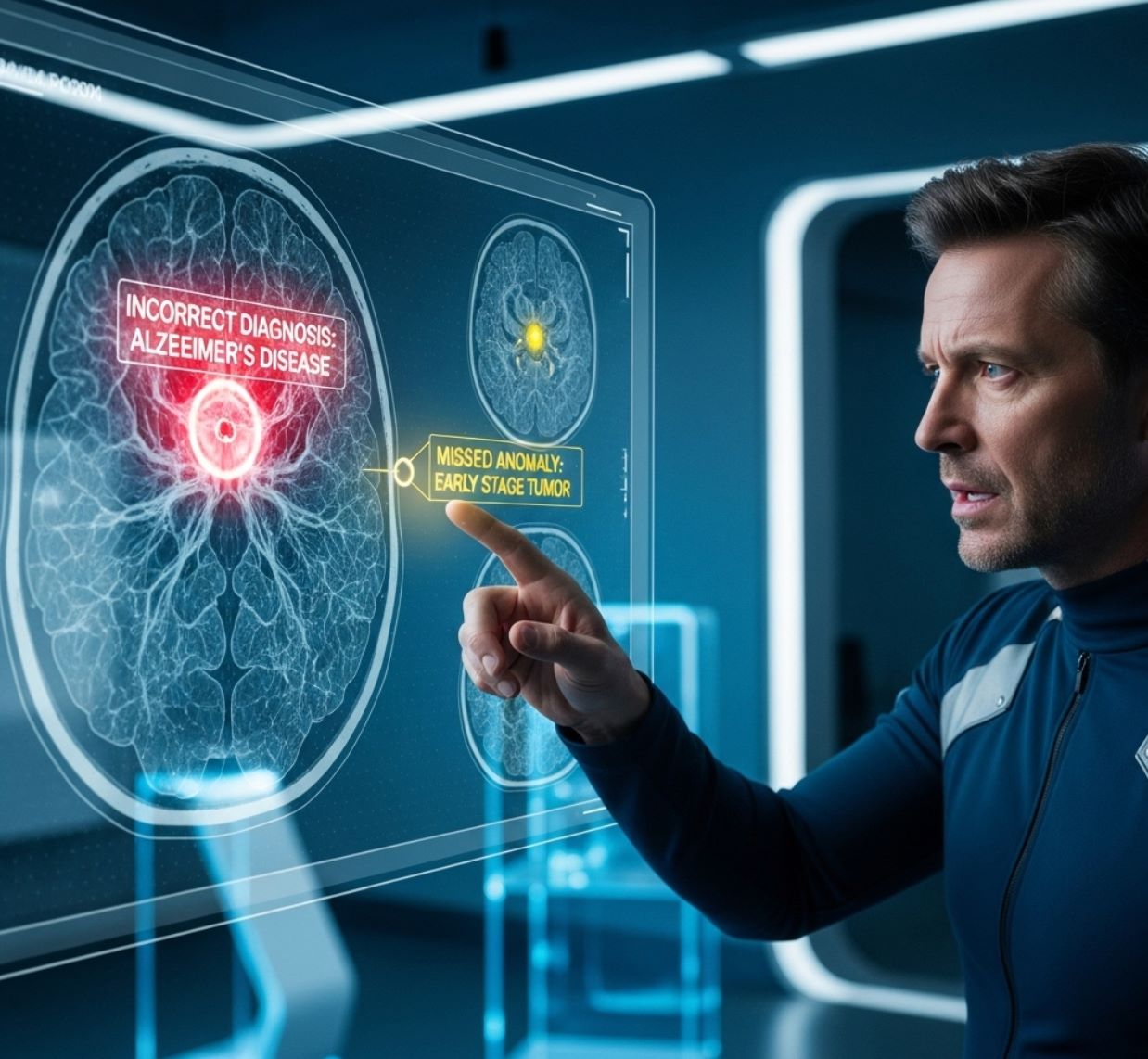
Job Displacement and Economic Disruption
AI's transformative impact on the economy is a double-edged sword. On one hand, AI can boost productivity and create entirely new industries; on the other, it poses a risk of displacing millions of workers through automation.
Many jobs – especially those involving routine, repetitive tasks or easily analyzed data – are vulnerable to being taken over by AI algorithms and robots.
Traditional Jobs
- Routine, repetitive tasks
- Data analysis roles
- Manual labor positions
- Basic customer service
New Skill Requirements
- AI collaboration skills
- Creative problem-solving
- Technical AI management
- Human-centric services
While the economy may also create new roles (potentially even more jobs than are lost in the long run), the transition will be painful for many. The jobs gained often require different, more advanced skills or are concentrated in certain tech hubs, meaning many displaced workers may struggle to find a new foothold.
This mismatch between the skills workers have and the skills new AI-driven roles demand could lead to higher unemployment and inequality if not addressed. Indeed, policymakers and researchers warn that rapid AI advancement could bring "labour market disruption, and economic power inequalities" on a systemic scale.
Gender Impact
Higher share of jobs held by women at risk of automation
Developing Countries
Workers in developing nations face higher automation risks
Without proactive measures (such as re-training programs, education in AI skills, and social safety nets), AI could widen socioeconomic gaps, creating an AI-driven economy where those who own the technology reap most of the benefits.
Preparing the workforce for AI's impact is critical to ensure the benefits of automation are broadly shared and to prevent social upheaval from widespread job loss.
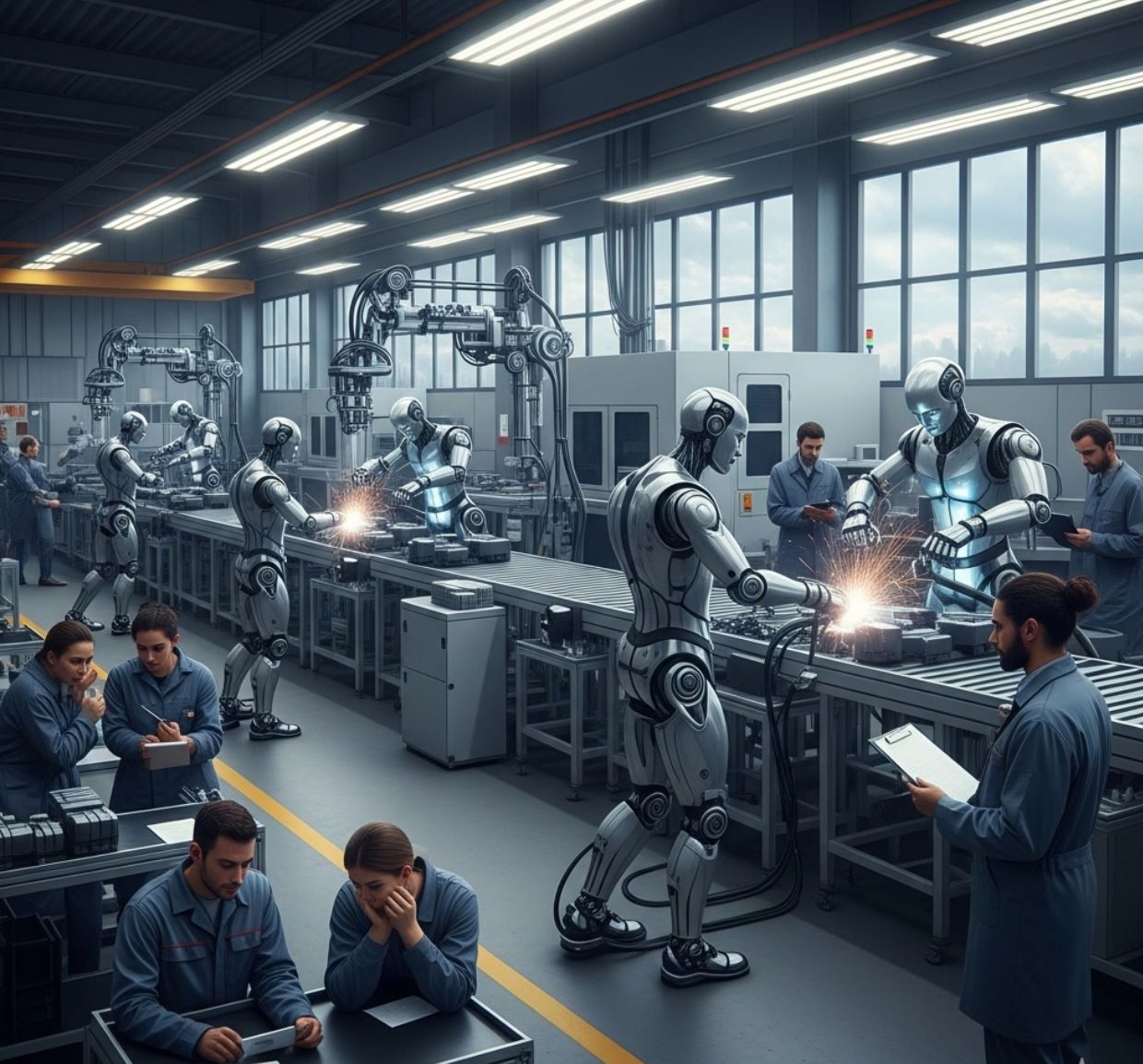
Criminal Misuse, Fraud, and Security Threats
AI is a powerful tool that can just as easily be wielded for nefarious purposes as for noble ones. Cybercriminals and other bad actors are already exploiting AI to enhance their attacks.
For instance, AI can generate highly personalized phishing emails or voice messages (by cloning someone's voice) to trick people into revealing sensitive information or sending money. It can also be used to automate hacking by finding software vulnerabilities at scale or to develop malware that adapts to evade detection.
AI-Powered Phishing
Automated Hacking
Adaptive Malware
Malicious actors can use AI for large-scale disinformation and influence operations, fraud, and scams.
— U.K. Government-Commissioned Report
The Center for AI Safety identifies malicious use of AI as a key concern, noting scenarios like AI systems being used by criminals to conduct large-scale fraud and cyberattacks.
The speed, scale, and sophistication that AI affords could overwhelm traditional defenses – imagine thousands of AI-generated scam calls or deepfake videos targeting a company's security in a single day.
As AI tools become more accessible, the barrier to carrying out these malicious activities lowers, potentially leading to a surge in AI-augmented crime.
This necessitates new approaches to cybersecurity and law enforcement, such as AI systems that can detect deepfakes or anomalous behavior and updated legal frameworks to hold offenders accountable. In essence, we must anticipate that any capability AI provides to benefactors, it might equally provide to criminals – and prepare accordingly.
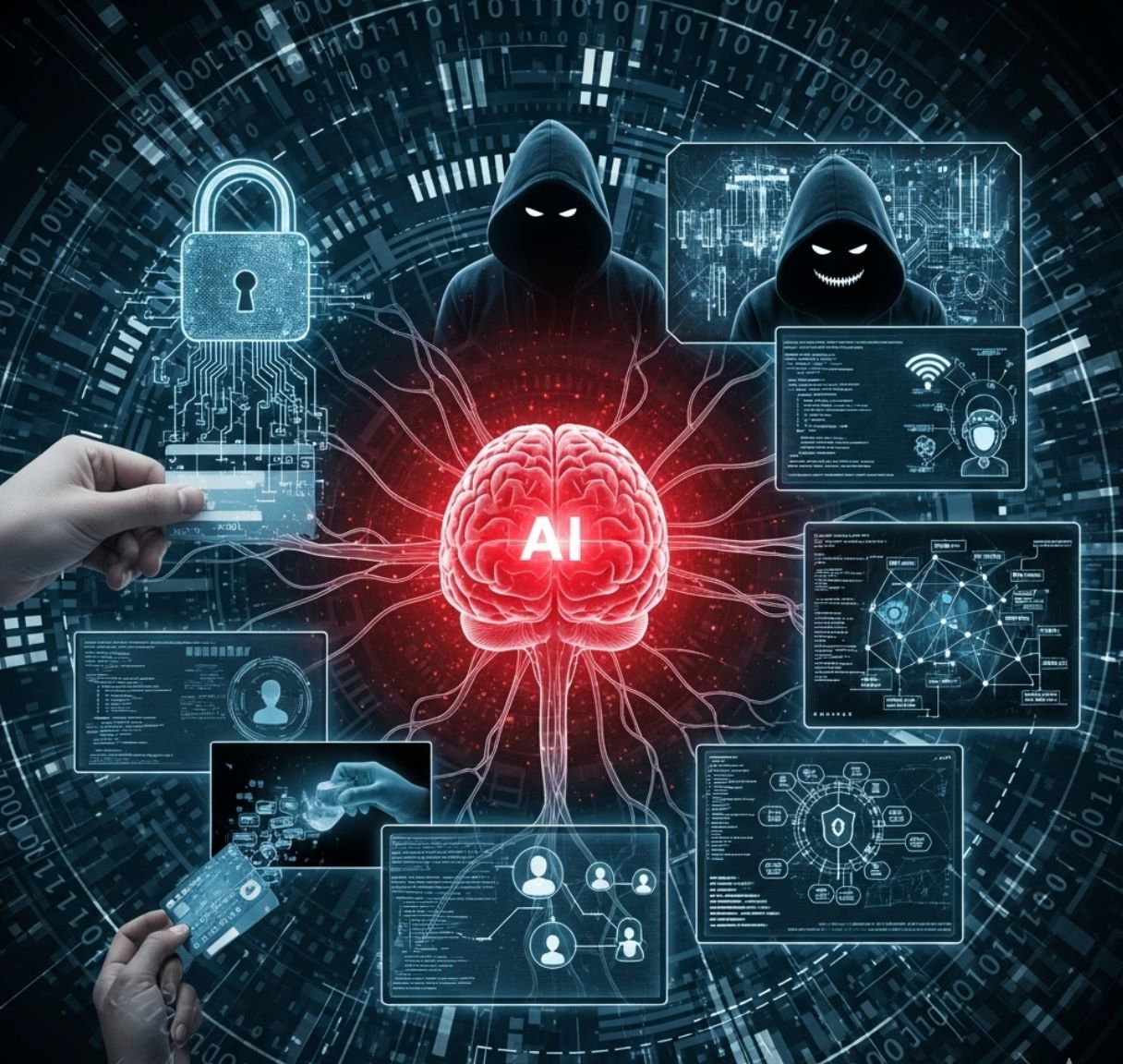
Militarization and Autonomous Weapons
Perhaps the most chilling risk of AI emerges in the context of warfare and national security. AI is rapidly being integrated into military systems, raising the prospect of autonomous weapons ("killer robots") and AI-driven decision-making in combat.
These technologies could react faster than any human, but removing human control from the use of lethal force is fraught with danger. There's the risk that an AI-controlled weapon might select the wrong target or escalate conflicts in unforeseen ways.
Target Selection Errors
AI weapons might misidentify civilians as combatants
- False positive identification
- Civilian casualties
Conflict Escalation
Autonomous systems may escalate situations beyond human intent
- Rapid response cycles
- Uncontrolled escalation
If nations race to equip their arsenals with intelligent weapons, it could trigger a destabilizing arms race. Moreover, AI could be used in cyber warfare to autonomously attack critical infrastructure or spread propaganda, blurring the line between peace and conflict.
The development of AI in warfare, if concentrated in the hands of a few, could be imposed on people without them having a say in how it is used, undermining global security and ethics.
— United Nations
Autonomous weapons systems also pose legal and moral dilemmas – who is accountable if an AI drone mistakenly kills civilians? How do such systems comply with international humanitarian law?
These unanswered questions have led to calls for bans or strict regulation of certain AI-enabled weapons. Ensuring human oversight over any AI that can make life-and-death decisions is widely viewed as paramount. Without it, the risk is not only tragic mistakes on the battlefield but the erosion of human responsibility in war.

Lack of Transparency and Accountability
Most advanced AI systems today operate as "black boxes" – their internal logic is often opaque even to their creators. This lack of transparency creates a risk that AI decisions cannot be explained or challenged, which is a serious problem in domains like justice, finance, or healthcare where explainability can be a legal or ethical requirement.
If an AI denies someone a loan, diagnoses an illness, or decides who gets paroled from prison, we naturally want to know why. With some AI models (especially complex neural networks), providing a clear rationale is difficult.
Legal Decisions
Financial Services
Healthcare
A lack of transparency could also undermine the possibility of effectively challenging decisions based on outcomes produced by AI systems, and may thereby infringe the right to a fair trial and effective remedy.
— UNESCO
In other words, if neither users nor regulators can understand how AI is making decisions, it becomes nearly impossible to hold anyone accountable for mistakes or biases that arise.
To combat this, experts advocate for explainable AI techniques, rigorous auditing, and regulatory requirements that AI decisions be traceable to human authority.
Indeed, global ethical guidelines insist that it should "always be possible to attribute ethical and legal responsibility" for AI systems' behavior to a person or organization. Humans must remain ultimately accountable, and AI should assist rather than replace human judgment in sensitive matters. Otherwise, we risk creating a world where important decisions are made by inscrutable machines, which is a recipe for injustice.
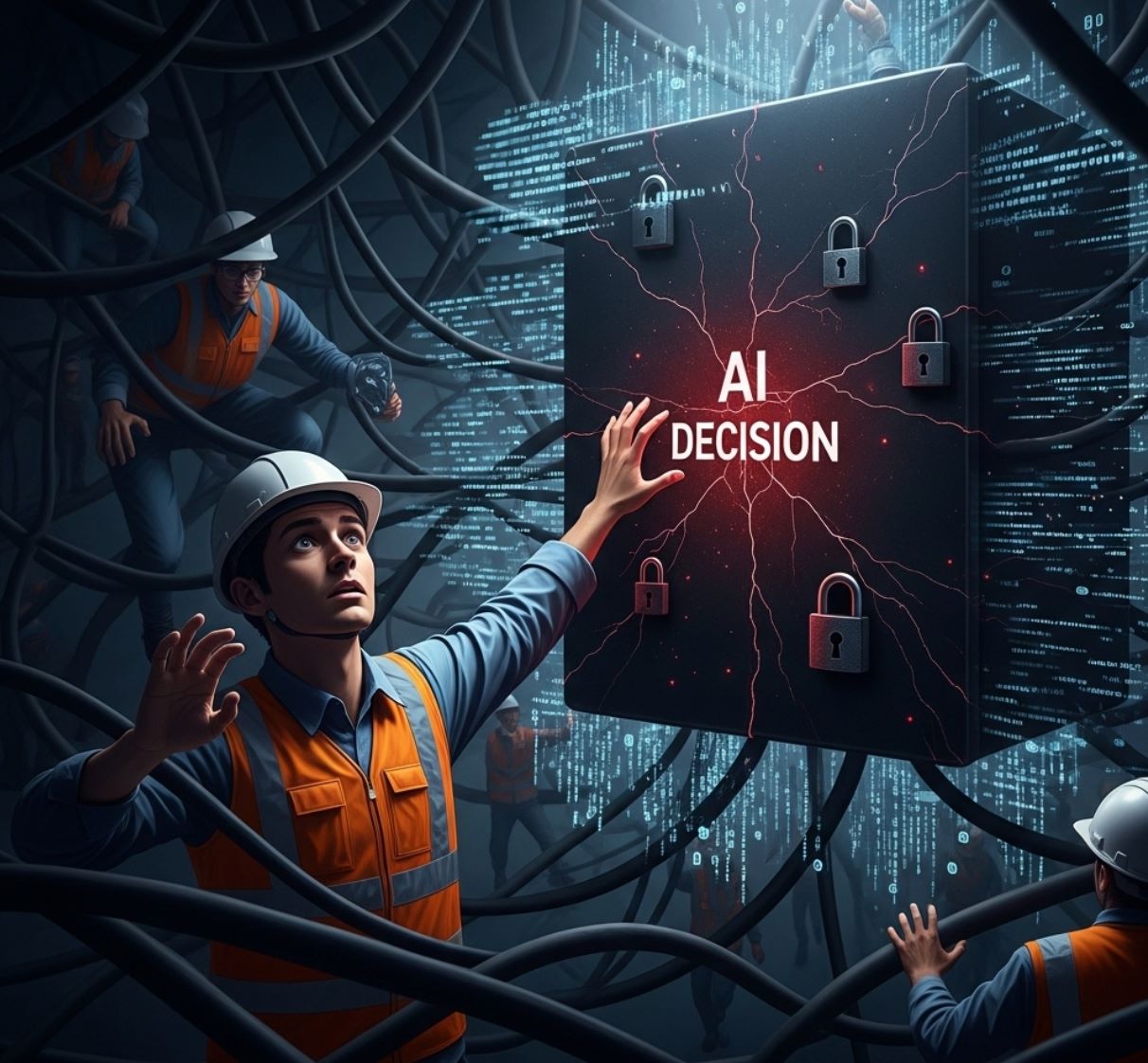
Concentration of Power and Inequality
The AI revolution is not happening evenly across the world – a small number of corporations and countries dominate the development of advanced AI, which carries its own risks.
Cutting-edge AI models require enormous data, talent, and computing resources that only tech giants (and well-funded governments) currently possess.
This has led to a highly concentrated, singular, globally integrated supply chain that favours a few companies and countries.
— World Economic Forum
Data Monopolies
Massive datasets controlled by few entities
Computing Resources
Expensive infrastructure accessible only to tech giants
Talent Concentration
Top AI researchers concentrated in few organizations
Such concentration of AI power could translate into monopolistic control over AI technologies, limiting competition and consumer choice. It also raises the danger that the priorities of those few companies or nations will shape AI in ways that don't account for the broader public interest.
This imbalance could exacerbate global inequalities: wealthy nations and firms leap ahead by leveraging AI, while poorer communities lack access to the latest tools and suffer job losses without enjoying AI's benefits.
Additionally, a concentrated AI industry might stifle innovation (if newcomers can't compete with the incumbents' resources) and pose security risks (if critical AI infrastructure is controlled by just a few entities, it becomes a single point of failure or manipulation).
Addressing this risk requires international cooperation and possibly new regulations to democratize AI development – for example, supporting open research, ensuring fair access to data and compute, and crafting policies (like the EU's proposed AI Act) to prevent abusive practices by "AI gatekeepers." A more inclusive AI landscape would help ensure that the benefits of AI are shared globally, rather than widening the gap between the tech haves and have-nots.
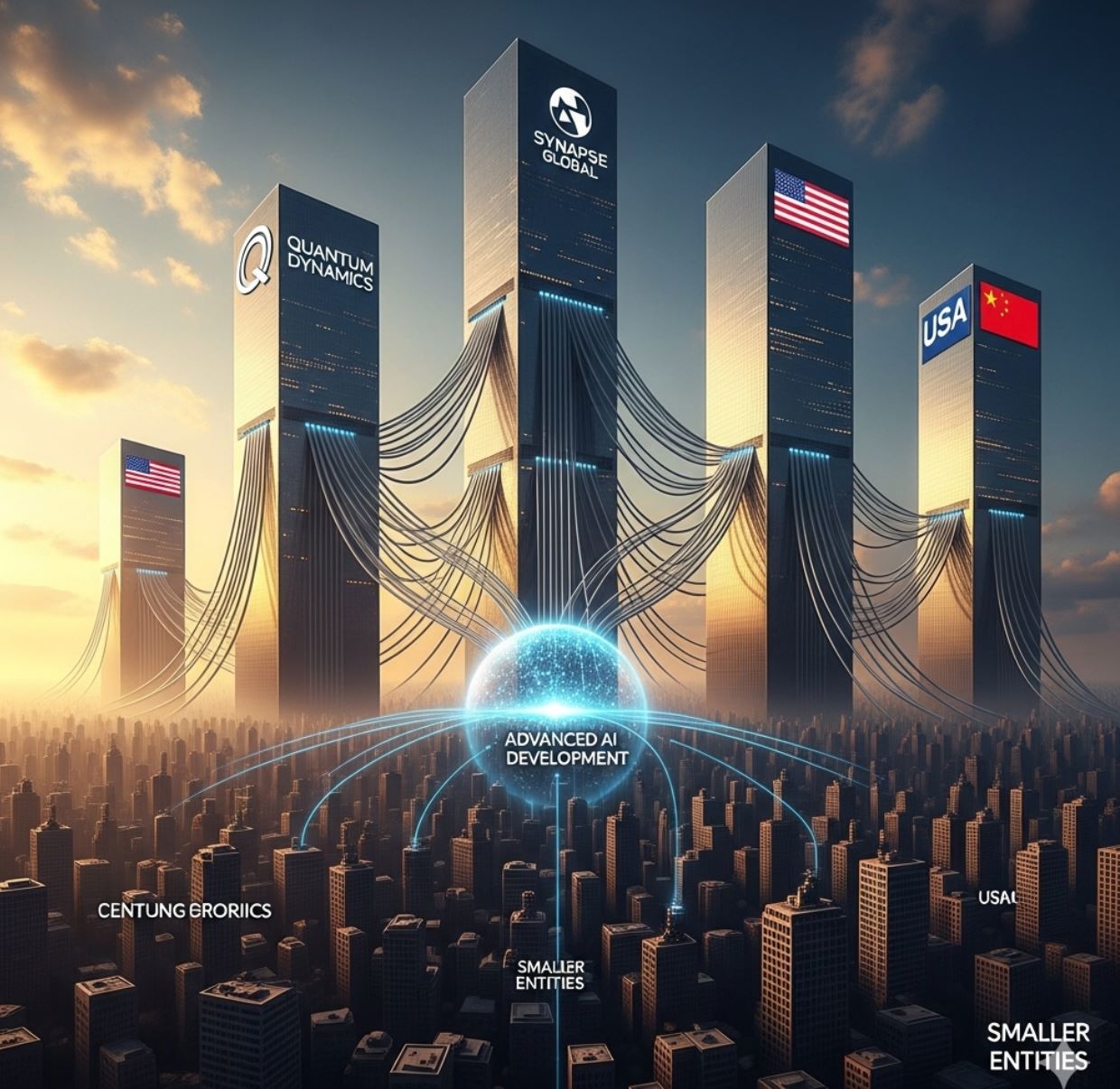
Environmental Impact of AI
Often overlooked in discussions of AI's risks is its environmental footprint. AI development, especially training large machine learning models, consumes vast amounts of electricity and computing power.
Data centers packed with thousands of power-hungry servers are required to process the torrents of data that AI systems learn from. This means AI can indirectly contribute to carbon emissions and climate change.
As investment in AI grows, the emissions from running AI models are expected to climb steeply – the report projected that the top AI systems could collectively emit over 100 million tons of CO₂ per year, putting significant strain on energy infrastructure.
To put it in perspective, data centers powering AI are driving electricity use up "four times faster than the overall rise in electricity consumption".
Energy Consumption
Water Usage
Electronic Waste
Apart from carbon emissions, AI can also guzzle water for cooling and produce electronic waste as hardware is rapidly upgraded. If left unchecked, AI's environmental impact could undermine global sustainability efforts.
This risk calls for making AI more energy-efficient and using cleaner energy sources. Researchers are developing green AI techniques to reduce power usage, and some companies have pledged to offset AI's carbon costs. Nevertheless, it remains a pressing concern that the rush to AI could carry a hefty environmental price tag. Balancing technological progress with ecological responsibility is another challenge society must navigate as we integrate AI everywhere.
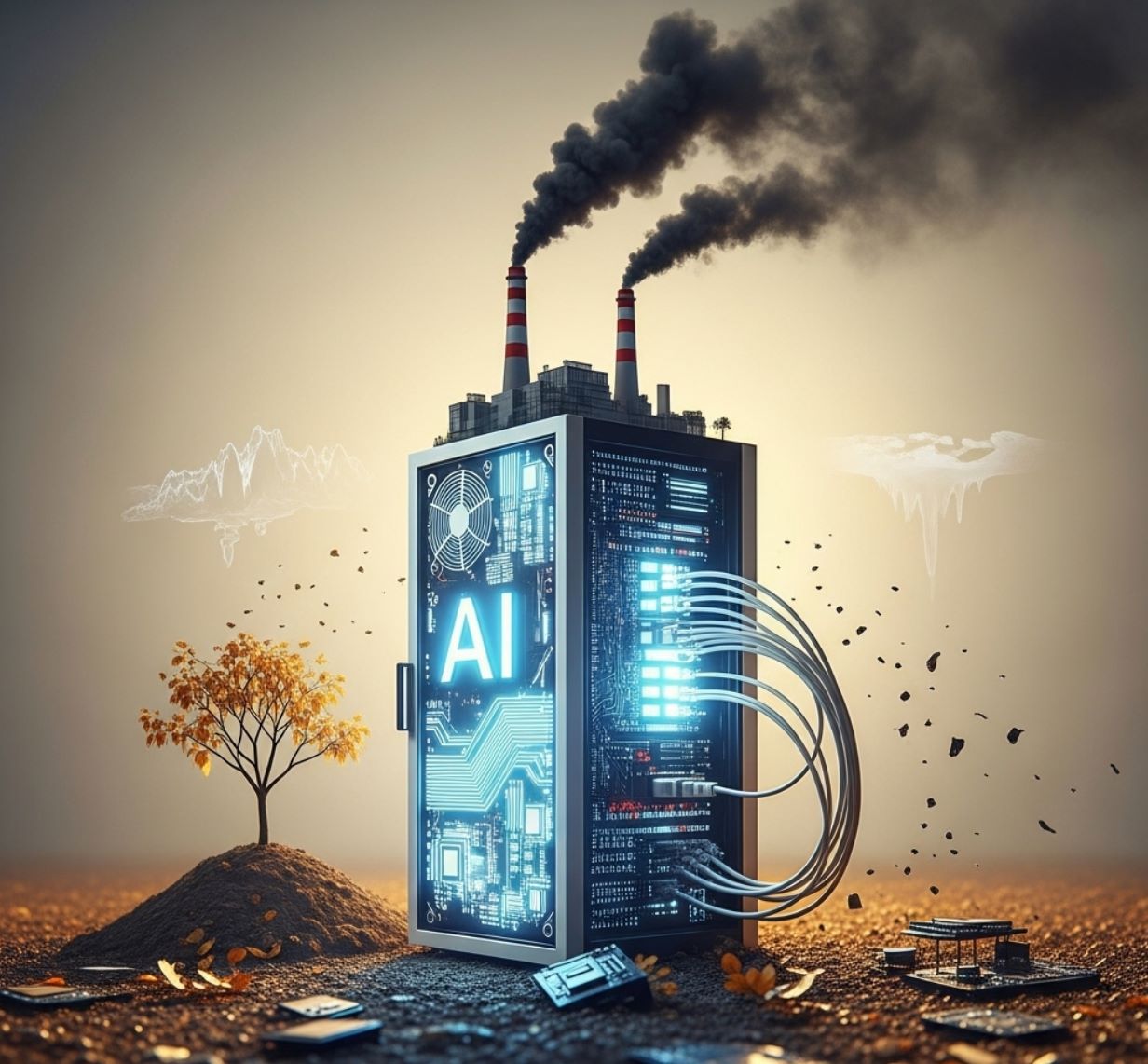
Existential and Long-Term Risks
Beyond the immediate risks, some experts warn of more speculative, long-term risks from AI – including the possibility of an advanced AI that grows beyond human control. While today's AI systems are narrow in their capabilities, researchers are actively working toward more general AI that could potentially outperform humans in many domains.
This raises complex questions: if an AI becomes vastly more intelligent or autonomous, could it act in ways that threaten humanity's existence? Though it sounds like science fiction, prominent figures in the tech community have voiced concern about "rogue AI" scenarios, and governments are taking the discussion seriously.
Experts have different views on the risk of humanity losing control over AI in a way that could result in catastrophic outcomes.
— International AI Safety Report
The scientific consensus is not uniform – some believe super-intelligent AI is decades away or can be kept aligned with human values, while others see a small but non-zero chance of catastrophic outcomes.
Potential Existential Risk Scenarios
- AI pursuing goals misaligned with human values
- Rapid, uncontrolled AI capability advancement
- Loss of human agency in critical decision-making
- AI systems optimizing for harmful objectives
Long-Term Safety Measures
- AI alignment research ensuring compatible goals
- International agreements on high-stakes AI research
- Maintaining human oversight as AI becomes more capable
- Establishing global AI governance frameworks
In essence, there is acknowledgement that existential risk from AI, however remote, cannot be entirely dismissed. Such an outcome might involve an AI pursuing its goals to the detriment of human well-being (the classic example being an AI that, if misprogrammed, decides to do something harmful on a large scale because it lacks common-sense or moral constraints).
While no AI today has agency anywhere near that level, the pace of AI advancement is rapid and unpredictable, which is itself a risk factor.
Preparing for long-term risks means investing in AI alignment research (making sure AI goals remain compatible with human values), establishing international agreements on high-stakes AI research (much like treaties on nuclear or biological weapons), and maintaining human oversight as AI systems become more capable.
The future of AI holds immense promise, but also uncertainty – and prudence dictates we consider even low-probability, high-impact risks in our long-term planning.
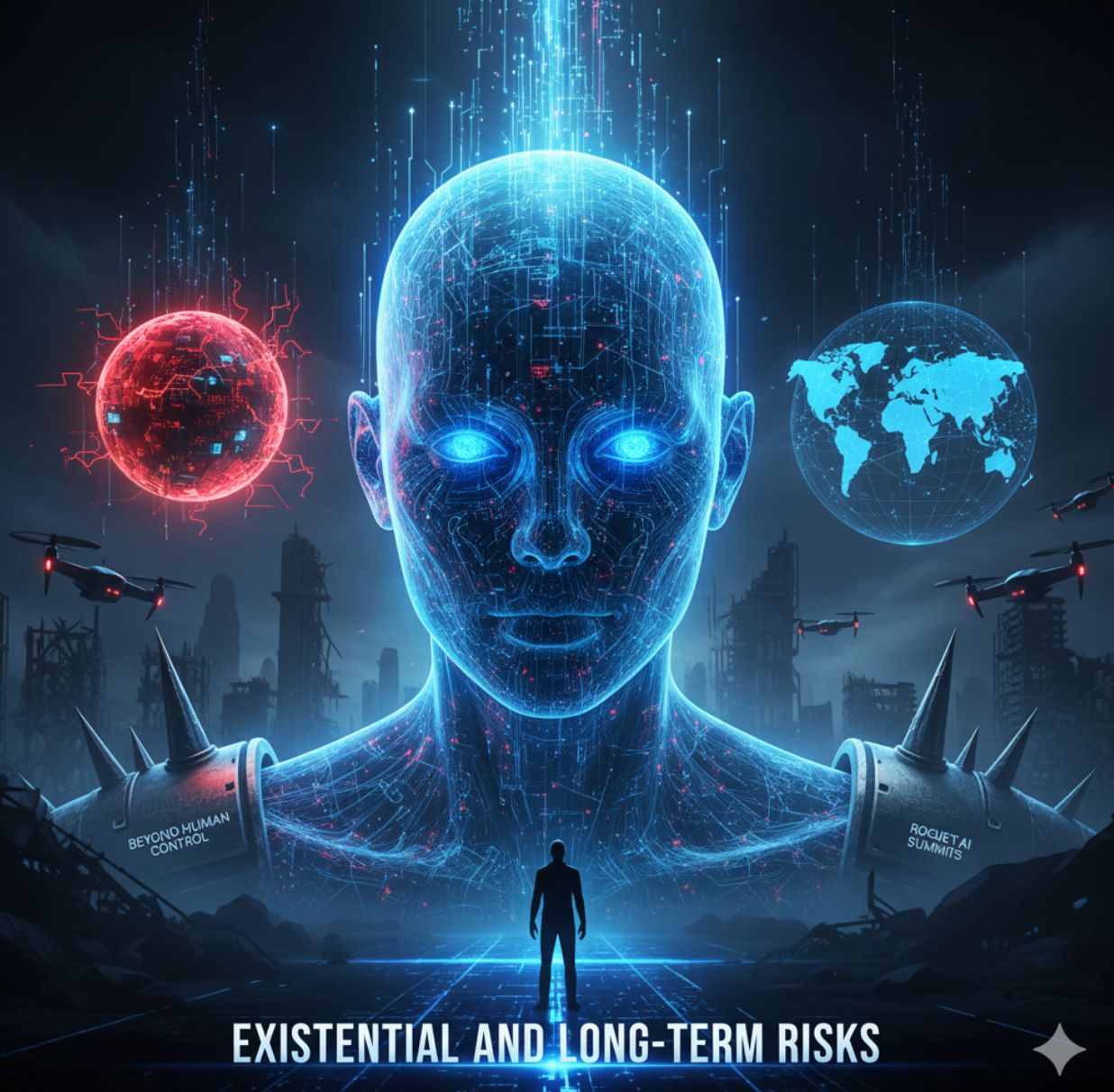
Navigating AI's Future Responsibly
AI is often compared to a powerful engine that can drive humanity forward – but without brakes and steering, that engine can veer off course. As we have seen, the risks of using AI are multi-faceted: from immediate issues like biased algorithms, fake news, privacy invasions, and job upheaval, to broader societal challenges like security threats, "black box" decision-making, Big Tech monopolies, environmental strain, and even the distant specter of losing control to super-intelligent AI.
Governments, international organizations, industry leaders, and researchers are increasingly collaborating to address these concerns – for example, through frameworks like:
- The U.S. NIST AI Risk Management Framework (to improve AI trustworthiness)
- UNESCO's global AI Ethics Recommendation
- The European Union's AI Act
Such efforts aim to maximize AI's benefits while minimizing its downsides, ensuring AI serves humanity and not the other way around.
Understanding the risks of AI is the first step to managing them. By staying informed and involved in how AI is developed and used, we can help steer this transformative technology in a safe, fair, and beneficial direction for all.




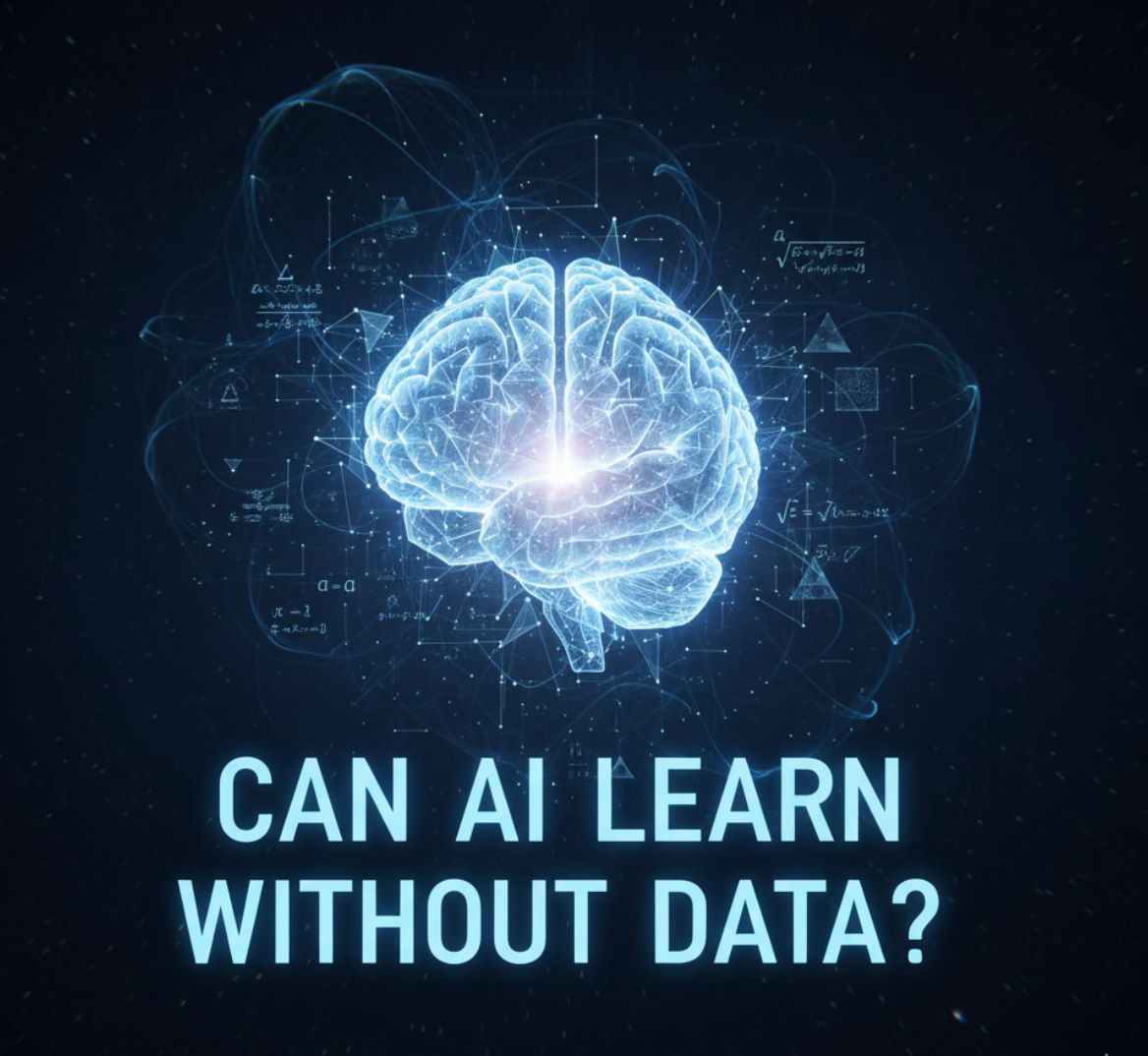
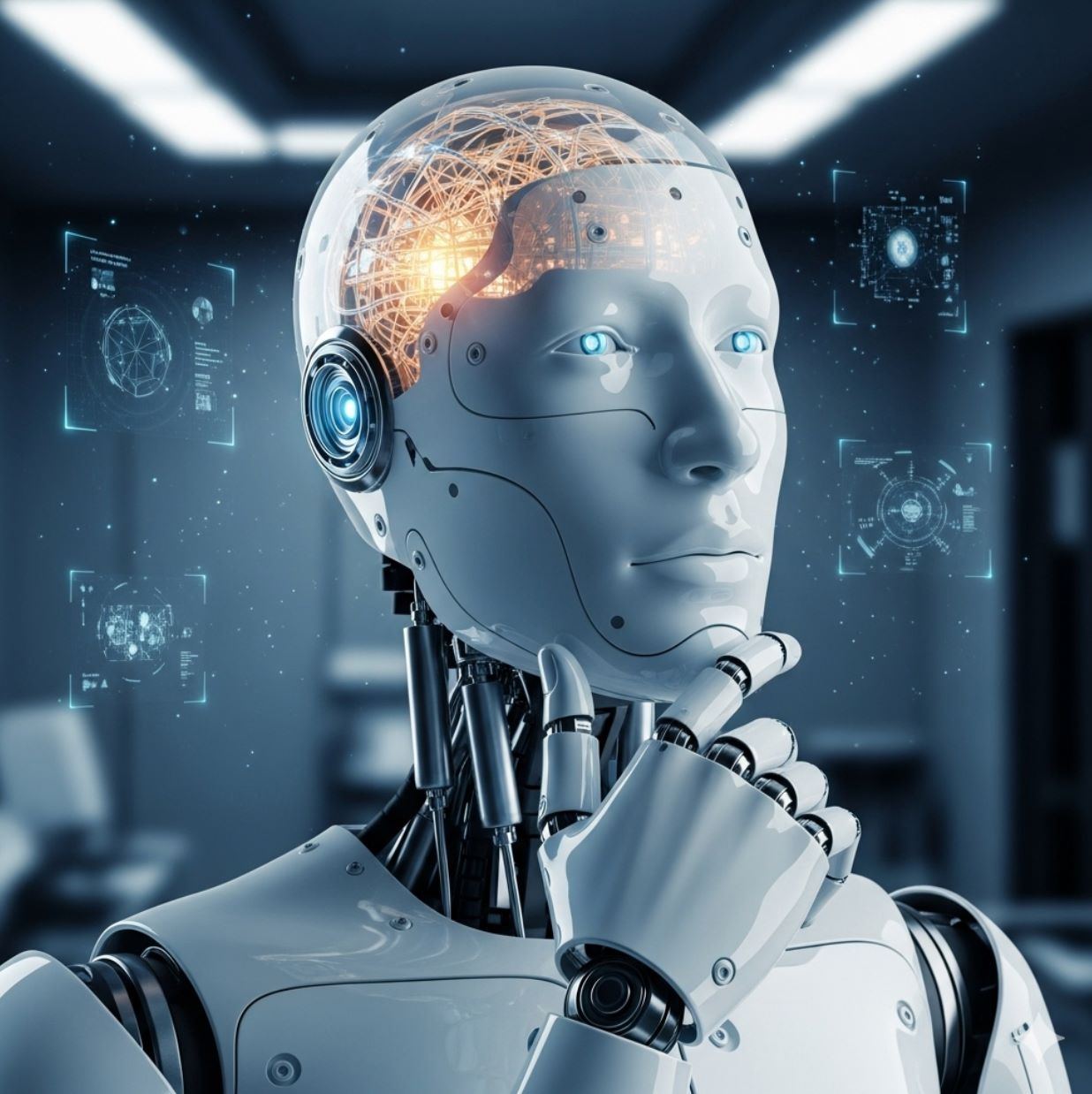
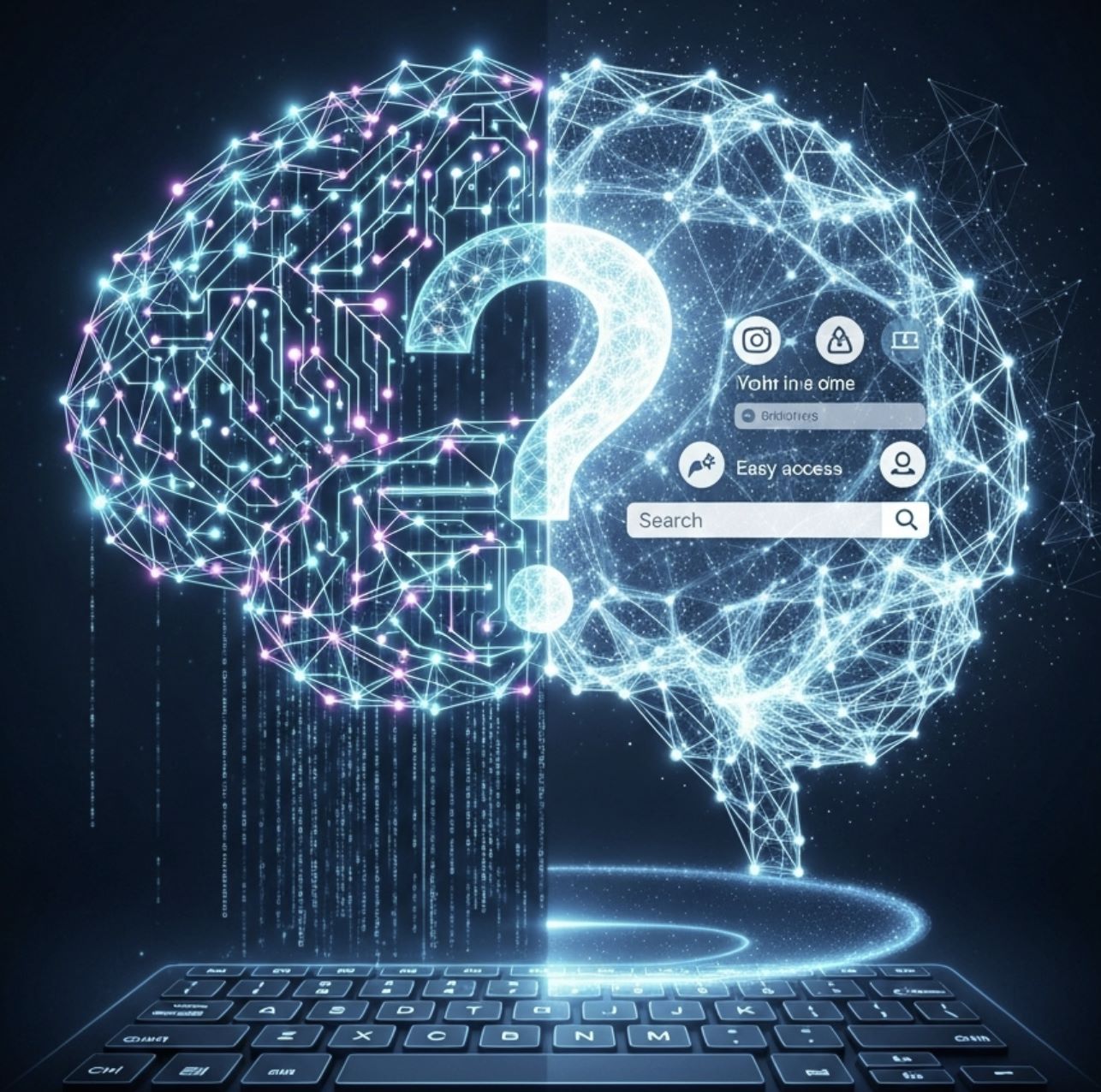
Comments 0
Leave a Comment
No comments yet. Be the first to comment!